Frequency Diversity Array for Near-Field Focusing
Abstract
:1. Introduction
2. Near-Field Focusing of Square-Distributed Arrays
2.1. Mathematical Modeling for Square-Distributed Arrays
2.2. Simulation Results
3. Near-Field Focusing of the Circular Array
3.1. Mathematical Modeling for Circular Distributed Arrays
3.2. Simulation Results
4. Simulation Verification of the Full Wave Simulation
5. Conclusions
Author Contributions
Funding
Conflicts of Interest
References
- Ding, S.; Huang, Y.-M.; Tang, H.; Bozzi, M.; Wang, B.-Z. Achieving Spatial Multi-Point Focusing by Frequency Diversity Array. Electronics 2019, 8, 883. [Google Scholar] [CrossRef] [Green Version]
- Chen, X.; Chen, B.; Xue, Y.; Chen, W.; Huang, Y. Space-Range-Doppler Focus Processing: A Novel Solution for Moving Target Integration and Estimation Using FDA-MIMO Radar. In Proceedings of the 2018 International Conference on Radar (RADAR), Brisbane, QLD, Australia, 27–31 August 2018; pp. 1–4. [Google Scholar]
- Chen, X.L.; Huang, Y.; Liu, N.B.; Guan, J.; He, Y. Radon-fractional ambiguity function-based detection method of low-observable maneuvering target. IEEE Trans. Aerosp. Electron. Syst. 2015, 51, 815–833. [Google Scholar] [CrossRef]
- Xu, J.; Yu, J.; Peng, Y.N.; Xia, X.G. Radar maneuvering target motion estimation based on generalized Radon-Fourier transform. IEEE Trans. Signal Process. 2012, 60, 6190–6201. [Google Scholar]
- AHaimovich, M.; Blum, R.S.; Cimini, L.J. MIMO radar with widely separated antennas. IEEE Signal Process. Mag. 2008, 25, 116–129. [Google Scholar] [CrossRef]
- Wang, W.Q.; So, H.C.; Farina, A. An overview on time/frequency modulated array processing. IEEE J. Sel. Top. Signal Process. 2017, 11, 228–246. [Google Scholar] [CrossRef]
- Antonik, P.; Wicks, M.C.; Griffiths, H.D.; Baker, C.J. Frequency diverse array radars. In Proceedings of the 2006 IEEE Conference on Radar, Verona, NY, USA, 24–27 April 2006; pp. 215–217. [Google Scholar]
- Chen, B.; Chen, X.; Huang, Y.; Guan, J. Transmit beampattern synthesis for the FDA radar. IEEE Antennas Wirel. Propag. Lett. 2018, 17, 98–101. [Google Scholar] [CrossRef]
- Gholami, A. Space-time Frequency decomposition and some applications. IEEE Trans. Geosci. Remote Sens. 2013, 51, 3598–3604. [Google Scholar] [CrossRef]
- Liao, Y.; Wang, W.Q.; Zheng, Z. Frequency Diverse Array Beampattern Synthesis Using Symmetrical Logarithmic Frequency Offsets for Target Indication. IEEE Antennas Wirel. Propag. Lett. 2019, 67, 3505–3509. [Google Scholar] [CrossRef]
- Ji, S.; Wang, W.Q.; Chen, H.; Zhang, S. On Physical-Layer Security of FDA Communications Over Rayleigh Fading Channels. IEEE Trans. Cogn. Commun. Netw. 2019, 5, 476–490. [Google Scholar] [CrossRef]
- Hu, Y.Q.; Chen, H.; Ji, S.L.; Wang, W.Q. Ambient Backscatter Communication with Frequency Diverse Array for Enhanced Channel Capacity and Detection Performance. IEEE Sens. J. 2020, 99. [Google Scholar] [CrossRef]
- Yao, A.M.; Rocca, P.; Wu, W.; Massa, A.; Fang, D.G. Synthesis of Time-Modulated Frequency Diverse Arrays for Short-Range Multi-Focusing. IEEE J. Sel. Top. Signal Process. 2017, 11, 282–294. [Google Scholar] [CrossRef]
- Landesa, L.; Obelleiro, F.; Rodriguez, J.L.; Rodriguez, J.A.; Ares, F.; Pino, A.G. Pattern synthesis of array antennas with additional isolation of near field arbitrary objects. Electron. Lett. 1998, 34, 1540–1542. [Google Scholar] [CrossRef]
- Bucci, O.M.; Capozzoli, A.; D’Elia, G. Power Pattern Synthesis of Reconfigurable Conformal Arrays with Near-Field Constraints. IEEE Antennas Wirel. Propag. Lett. 2004, 52, 132–141. [Google Scholar]
- Steyskal, H. Synthesis of Antenna Patterns with Prescribed Nulls. IEEE Trans. Antennas Propag. 1982, 30, 273–279. [Google Scholar] [CrossRef] [Green Version]
- Secmen, M.; Demir, S.; Hizal, A.; Eker, T. Frequency diverse array antenna with periodic time modulated pattern in range and angle. In Proceedings of the 2007 IEEE Radar Conference, Boston, MA, USA, 17–20 April 2007; pp. 427–430. [Google Scholar]
- Ma, Y.; Wei, P.; Zhang, H. General Focusing Beamformer for FDA: Mathematical Model and Resolution Analysis. IEEE Antennas Wirel. Propag. Lett. 2019, 67, 3089–3100. [Google Scholar] [CrossRef]
- Nusenu, S.Y.; Wang, Z.; Wang, W. FDA radar using Costas sequence modulated frequency increments. In Proceedings of the 2016 CIE International Conference on Radar (RADAR), Guangzhou, China, 10–13 October 2016; pp. 1–4. [Google Scholar]
- Dai, M.; Wang, W.; Shao, H. FDA radar ambiguity function optimization with simulated annealing algorithm. In Proceedings of the 2015 Asia-Pacific Signal and Information Processing Association Annual Summit and Conference (APSIPA), Hong Kong, China, 16–19 December 2015; pp. 740–743. [Google Scholar]
- Zubair, M.; Ahmed, S.; Alouini, M. Frequency Diverse Array Radar: A Closed-Form Solution to Design Weights for Desired Beampattern. In Proceedings of the ICASSP 2020—2020 IEEE International Conference on Acoustics, Speech and Signal Processing (ICASSP), Barcelona, Spain, 4–8 May 2020; pp. 4687–4691. [Google Scholar]
- Xing, C.; Liu, D.; Gong, S.; Xu, W.; Chen, S.; Hanzo, L. Training Optimization for Hybrid MIMO Communication Systems. IEEE Trans. Wirel. Commun. 2020. [Google Scholar] [CrossRef]
- Ma, Y.; Wei, P.; Zhang, H.; Liao, H. A novel non-optimized method to synthesize dot-shaped range-angle beampattern for FDA. In Proceedings of the 2018 IEEE Radar Conference (RadarConf18), Oklahoma City, OK, USA, 23–27 April 2018; pp. 781–785. [Google Scholar]
- Shao, H.; Chen, H.; Li, J. Transmit energy focusing in two-dimensional sections with frequency diverse array. In Proceedings of the 2015 IEEE China Summit and International Conference on Signal and Information Processing (ChinaSIP), Chengdu, China, 12–15 July 2015; pp. 104–108. [Google Scholar]
- Comisso, M.; Buttazzoni, G.; Vescovo, R. Reconfigurable Antenna Arrays with Multiple Requirements: A Versatile 3D Approach. IEEE Antennas Wirel. Propag. Lett. 2017, 2017. [Google Scholar] [CrossRef]
- Curiel, L.; Hynynen, K. Localized harmonic motion imaging for Focused Ultrasound Surgery targeting and treatment outcome. In Proceedings of the 2010 IEEE International Ultrasonics Symposium, San Diego, CA, USA, 11–14 October 2010; pp. 459–462. [Google Scholar]
- Xu, J.; Liao, G.; Zhang, Y.; Ji, H.; Huang, L. An adaptive range-angle-Doppler processing approach for FDA-MIMO radar using three-dimensional localization. IEEE J. Sel. Top. Signal Process. 2017, 11, 309–320. [Google Scholar] [CrossRef]
- Xu, J.; Liao, G.; Huang, L.; So, H.C. Robust adaptive beamforming for fast-moving target detection with FDA-STAP radar. IEEE Trans. Signal Process. 2016, 65, 973–984. [Google Scholar] [CrossRef]
- Cameron, R.J.; Kudsia, C.M.; Mansour, R.R. Microwave Filters for Communication Systems: Fundamentals, Design, and Applications; John Wiley and Sons: New York, NY, USA, 2018. [Google Scholar]
- Ahmadivand, A.; Gerislioglu, B.; Ramezani, Z. Gated graphene island-enabled tunable charge transfer plasmon terahertz metamodulator. Nanoscale 2019, 11, 8091–8095. [Google Scholar] [CrossRef]
- Klar, T.; Perner, M.; Grosse, S.; Von Plessen, G.; Spirkl, W.; Feldmann, J. Surface-Plasmon Resonances in Single Metallic Nanoparticles. Phys. Rev. Lett. 1998, 80, 4249–4252. [Google Scholar] [CrossRef]
- Liu, Y.; Ruan, H.; Wang, L.; Nehorai, A. The random frequency diverse array: A new antenna structure for uncoupled direction-range indication in active sensing. IEEE J. Sel. Top. Signal Process. 2017, 11, 295–308. [Google Scholar] [CrossRef]
- Higgins, T.; Blunt, S.D. Analysis of range-angle coupled beamforming with frequency-diverse chirps. In Proceedings of the 2009 International Waveform Diversity and Design Conference, Kissimmee, FL, USA, 8–13 February 2009; pp. 140–144. [Google Scholar]
- Cheng, J.; Wang, W.; Chen, H.; Ji, S. Temporal Focusing Effects of Time-Reversal Frequency Diverse Array Antenna. IEEE Antennas Wirel. Propag. Lett. 2019, 18, 1858–1862. [Google Scholar] [CrossRef]

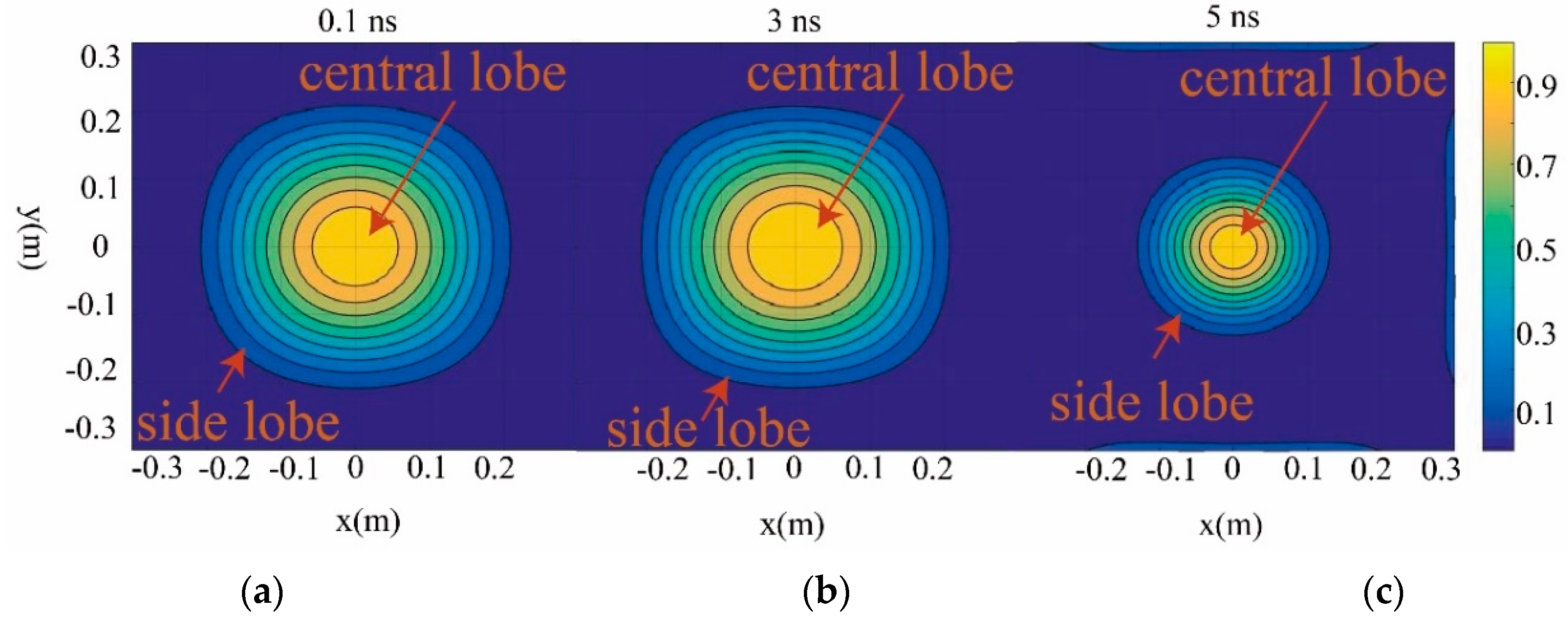


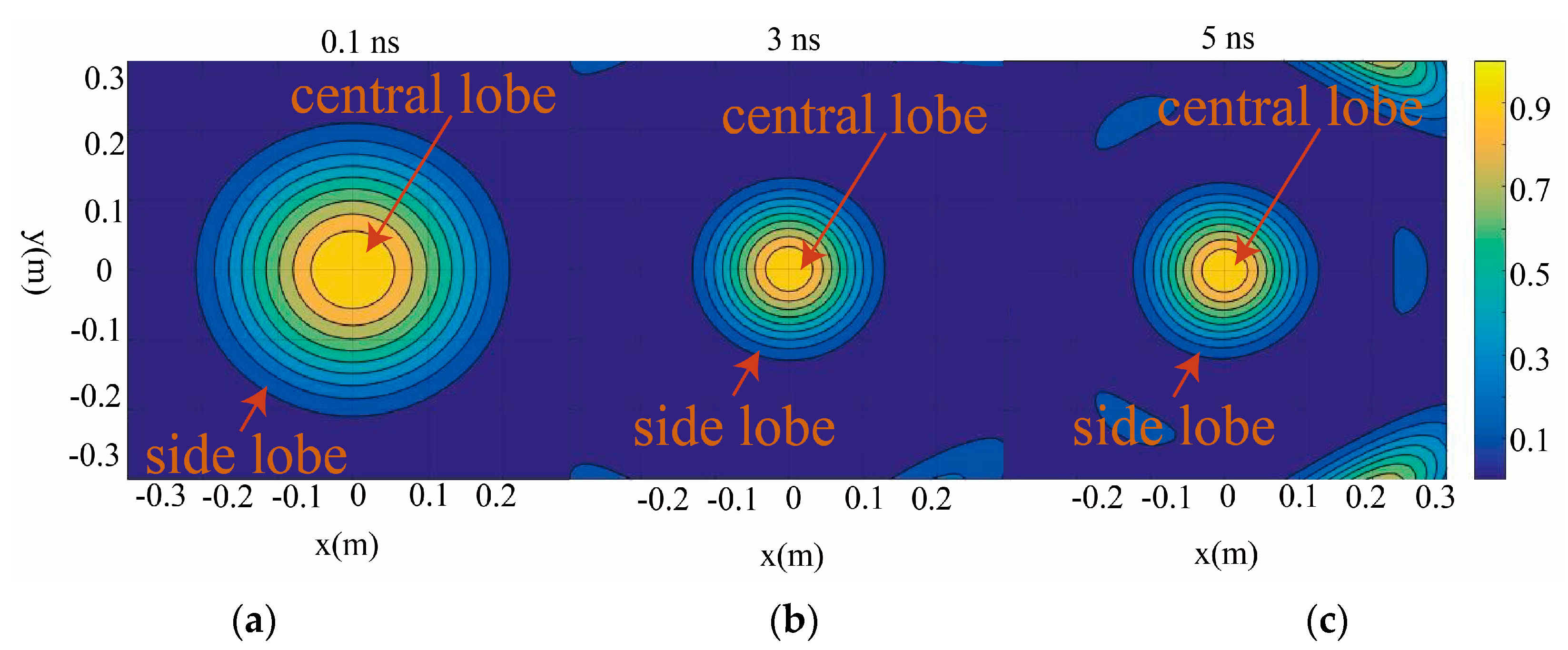
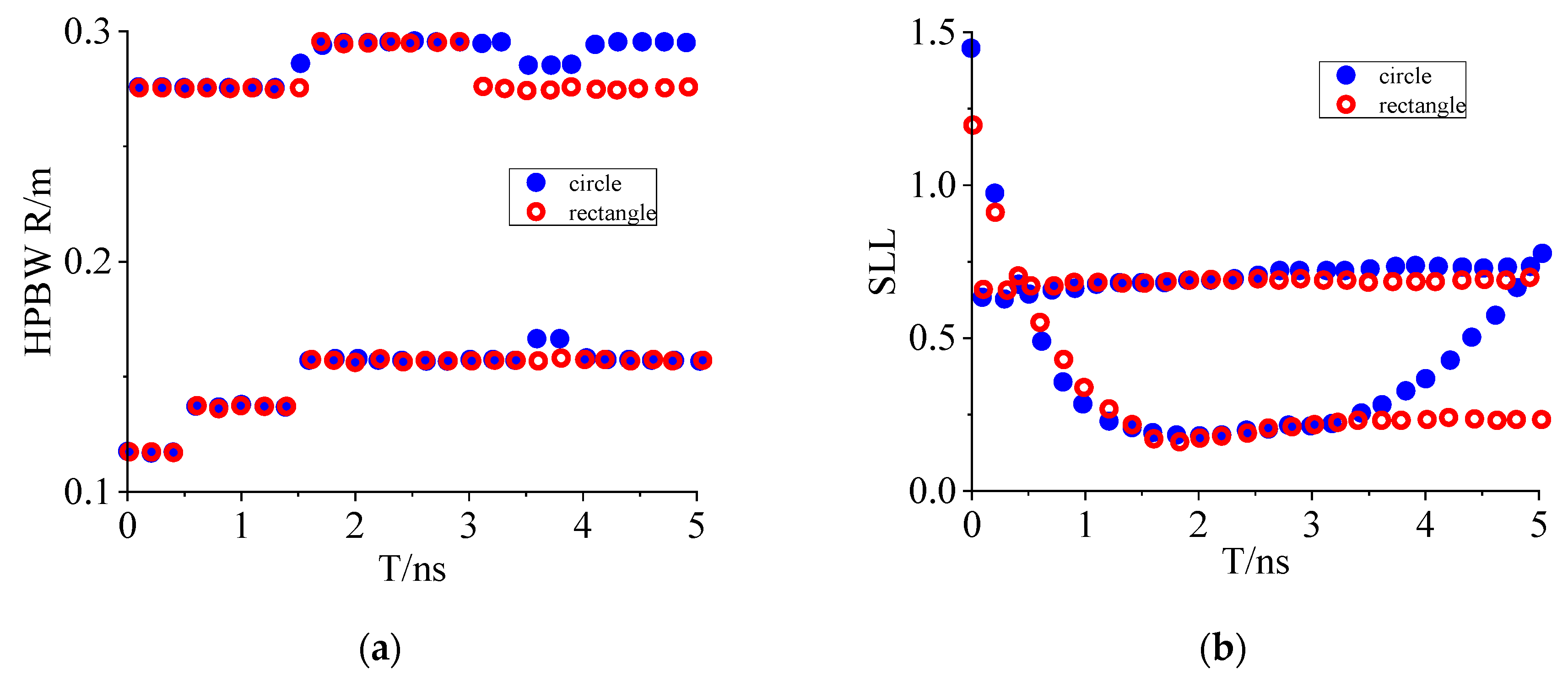
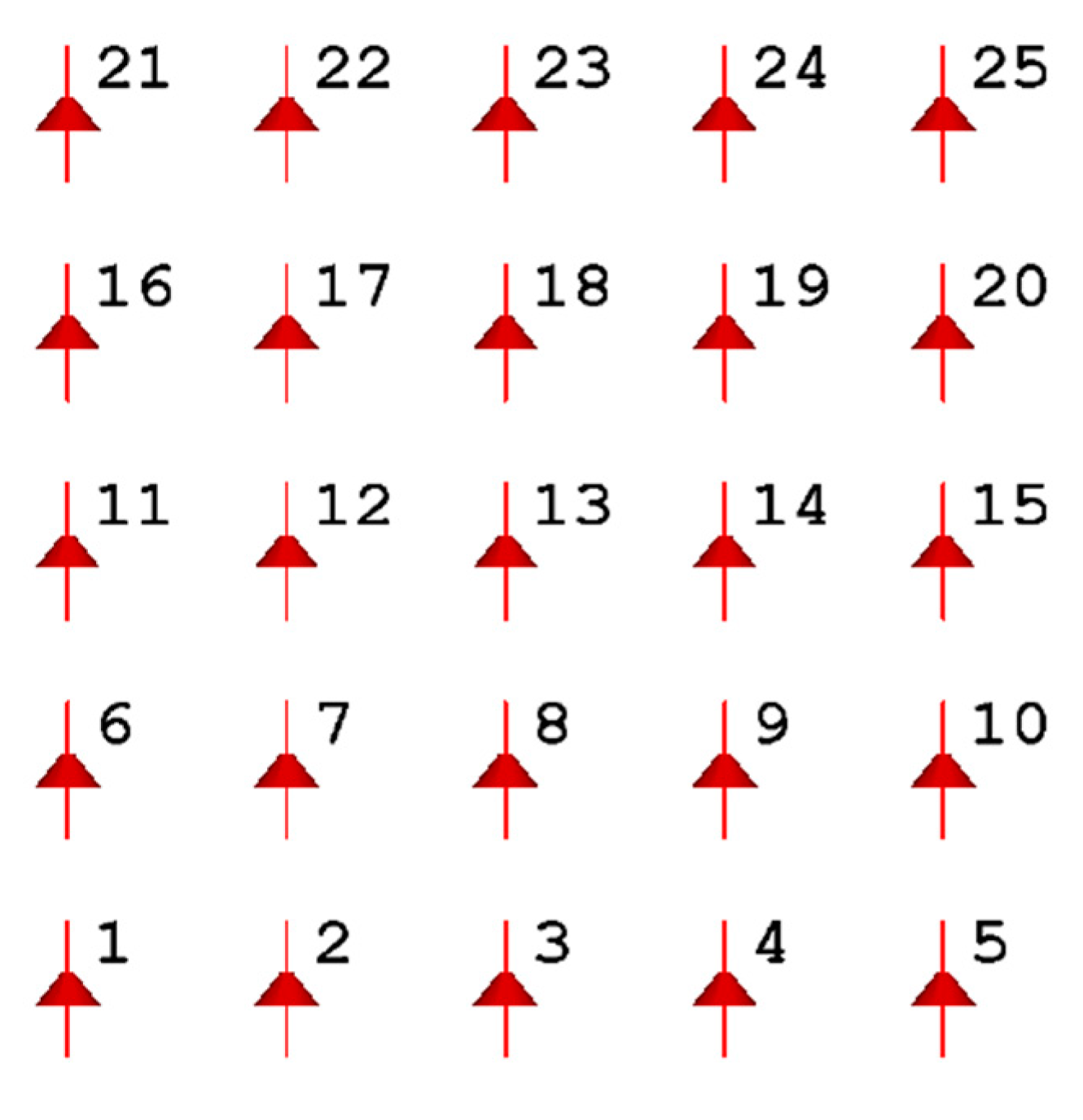
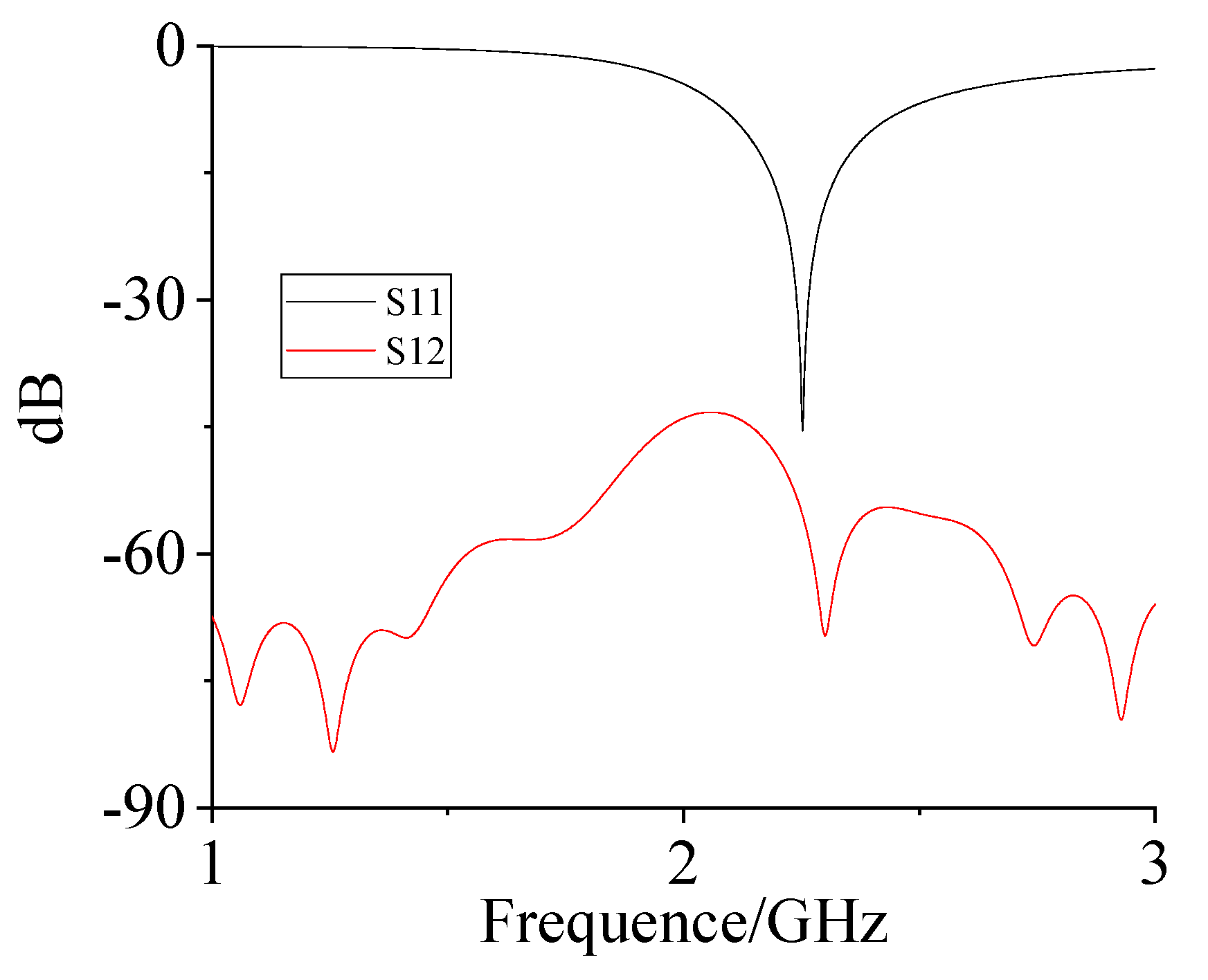

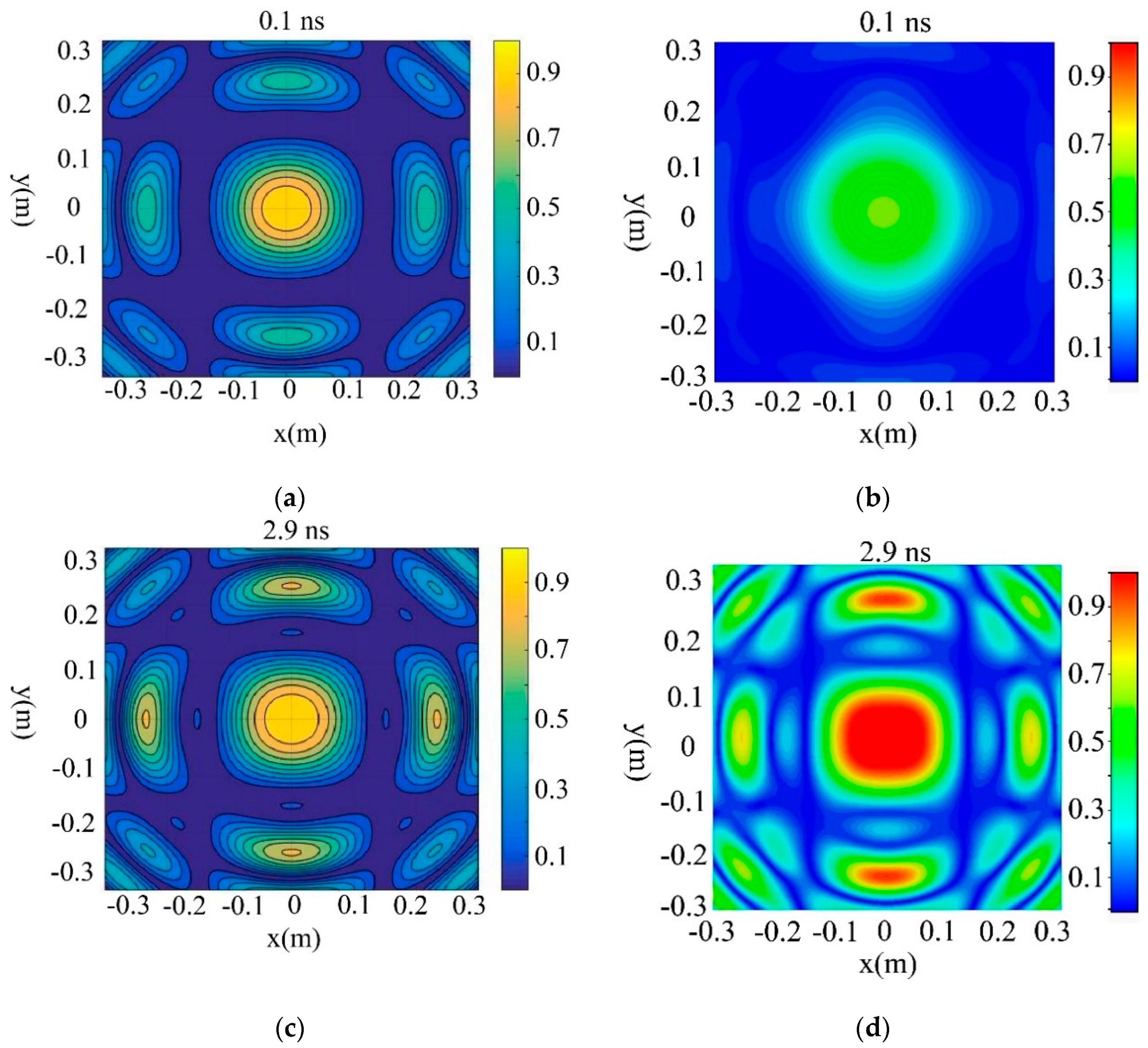
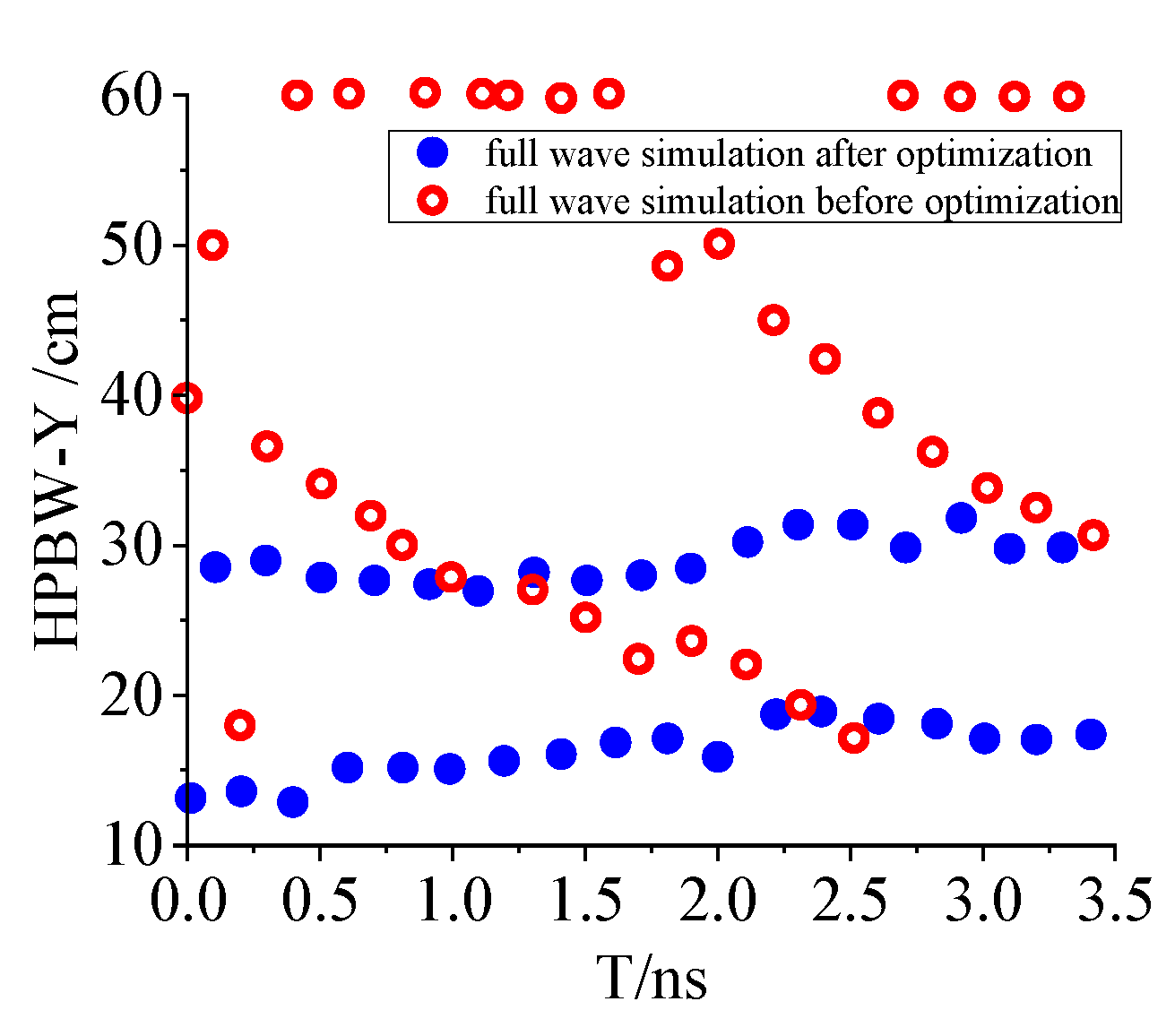
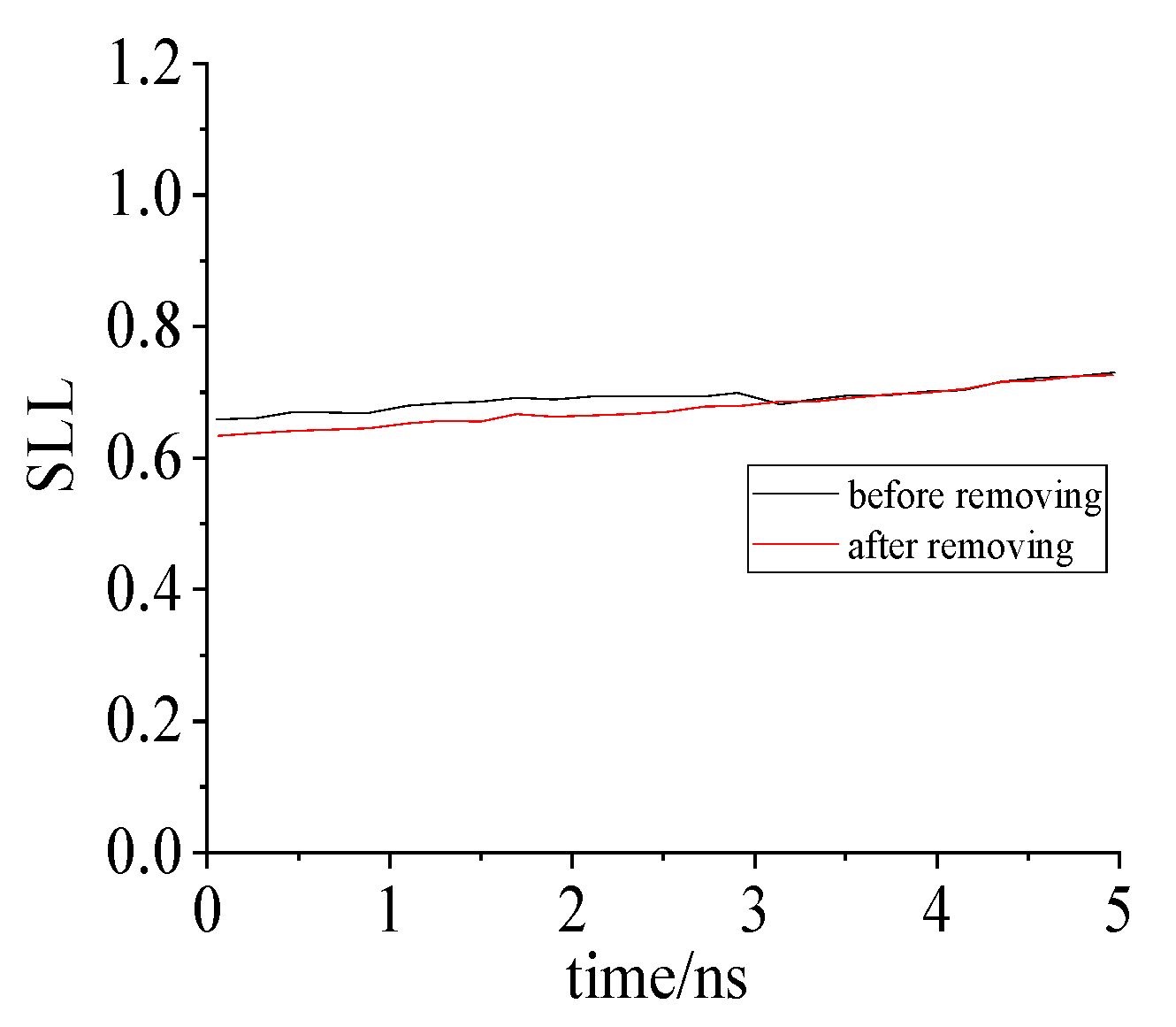
| Index | ||
|---|---|---|
| 1 | 1.22 | 1.00 |
| 2 | 0.87 | 0.32 |
| 3 | 1.49 | 0.19 |
| 4 | 1.04 | 0.02 |
| 5 | 2.18 | 0.11 |
| 6 | 0 | 0.11 |
| Index. | ||
|---|---|---|
| 1 | 0.90 | 0.45 |
| 2 | 1.60 | 0.18 |
| 3 | 1.68 | 0.27 |
| 4 | 2.15 | 0.26 |
| 5 | 1.33 | 0.92 |
| 6 | 1.07 | 0.94 |
| 7 | 0 | 0.02 |
© 2020 by the authors. Licensee MDPI, Basel, Switzerland. This article is an open access article distributed under the terms and conditions of the Creative Commons Attribution (CC BY) license (http://creativecommons.org/licenses/by/4.0/).
Share and Cite
Han, X.; Ding, S.; Huang, Y.; Zhou, Y.; Tang, H.; Wang, B. Frequency Diversity Array for Near-Field Focusing. Electronics 2020, 9, 958. https://doi.org/10.3390/electronics9060958
Han X, Ding S, Huang Y, Zhou Y, Tang H, Wang B. Frequency Diversity Array for Near-Field Focusing. Electronics. 2020; 9(6):958. https://doi.org/10.3390/electronics9060958
Chicago/Turabian StyleHan, Xu, Shuai Ding, Yongmao Huang, Yuliang Zhou, Huan Tang, and Bingzhong Wang. 2020. "Frequency Diversity Array for Near-Field Focusing" Electronics 9, no. 6: 958. https://doi.org/10.3390/electronics9060958
APA StyleHan, X., Ding, S., Huang, Y., Zhou, Y., Tang, H., & Wang, B. (2020). Frequency Diversity Array for Near-Field Focusing. Electronics, 9(6), 958. https://doi.org/10.3390/electronics9060958





